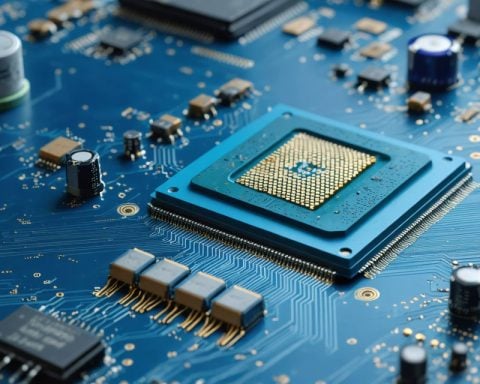In the fast-evolving world of gaming, NVIDIA, often abbreviated as NVDA, is once again at the forefront of technological innovation. Known for its cutting-edge graphic processing units, NVIDIA is now leveraging artificial intelligence (AI) to redefine the gaming experience.
NVIDIA’s newest AI technology, DLSS (Deep Learning Super Sampling), is a groundbreaking feature that enhances graphic fidelity without compromising performance. Gamers will now experience smoother gameplay and sharper images, even on less powerful systems. This represents a significant leap forward in inclusive gaming, broadening access to high-quality gaming experiences.
Beyond just graphics, NVIDIA’s AI is revolutionizing how games are developed and played. AI-driven dynamic environments could become the norm, offering players unique experiences each time they play a game. Imagine enemy AI that learns from your gameplay or environments that adapt to your decisions—NVIDIA’s AI technology makes this a tangible future.
Additionally, NVIDIA is using AI to power its voice synthesis systems, which could dramatically improve in-game dialogue and narration. This could create more immersive and reactive gaming worlds, blurring the lines between reality and gaming.
These innovations are not without challenges. Game developers need to integrate these sophisticated systems seamlessly into games, potentially increasing development time and costs. However, the potential rewards—a richer, more immersive gaming experience—make this a journey worth taking.
In the context of new technologies, NVIDIA is poised not only to enhance gaming graphics but also to transform the entire gaming ecosystem, ushering gamers into an era where his latest innovations seem like magic.
The Hidden Power of AI in Gaming: Beyond the Virtual Realm
The advent of NVIDIA’s AI-driven technologies is not only transforming gaming but also impacting broader societal dynamics in unexpected ways. This technological evolution is driving changes across several fronts, bringing both opportunities and challenges.
Beyond visual splendor, NVIDIA’s AI innovations impact how communities gather in virtual worlds. With improved graphics and more immersive experiences, online gaming hubs like Fortnight or Minecraft become richer environments for social interaction, learning, and creativity, transcending geographic boundaries. Such platforms may soon evolve into sophisticated networking arenas where users connect over shared experiences and ideas, resembling real-world social networks.
However, as these virtual experiences become more captivating, concerns arise over potential impacts on mental health. Immersive environments have the power to intensify gaming addiction, as players may find it challenging to return to reality, leading to increased isolation and anxiety. Are we prepared for a world where digital escapism becomes more enticing than the real world?
Moreover, while AI-enhanced gaming opens doors for educational applications and remote collaboration, it inadvertently requires significant infrastructure investment. Developing nations might struggle to provide the bandwidth and hardware necessary for their populations to participate, risking a widening digital divide. What steps can be taken to ensure equitable access to these groundbreaking experiences worldwide?
The dual nature of these advancements demands careful consideration. They hold the promise of bridging divides and fostering global connection as much as they offer the allure of escapism. This revolutionary movement invites an examination of the societal structures it influences.
For further information on the potential impacts of AI in gaming, you can explore resources on NVIDIA and UNICEF for discussions on ethical technology and connectivity.



















